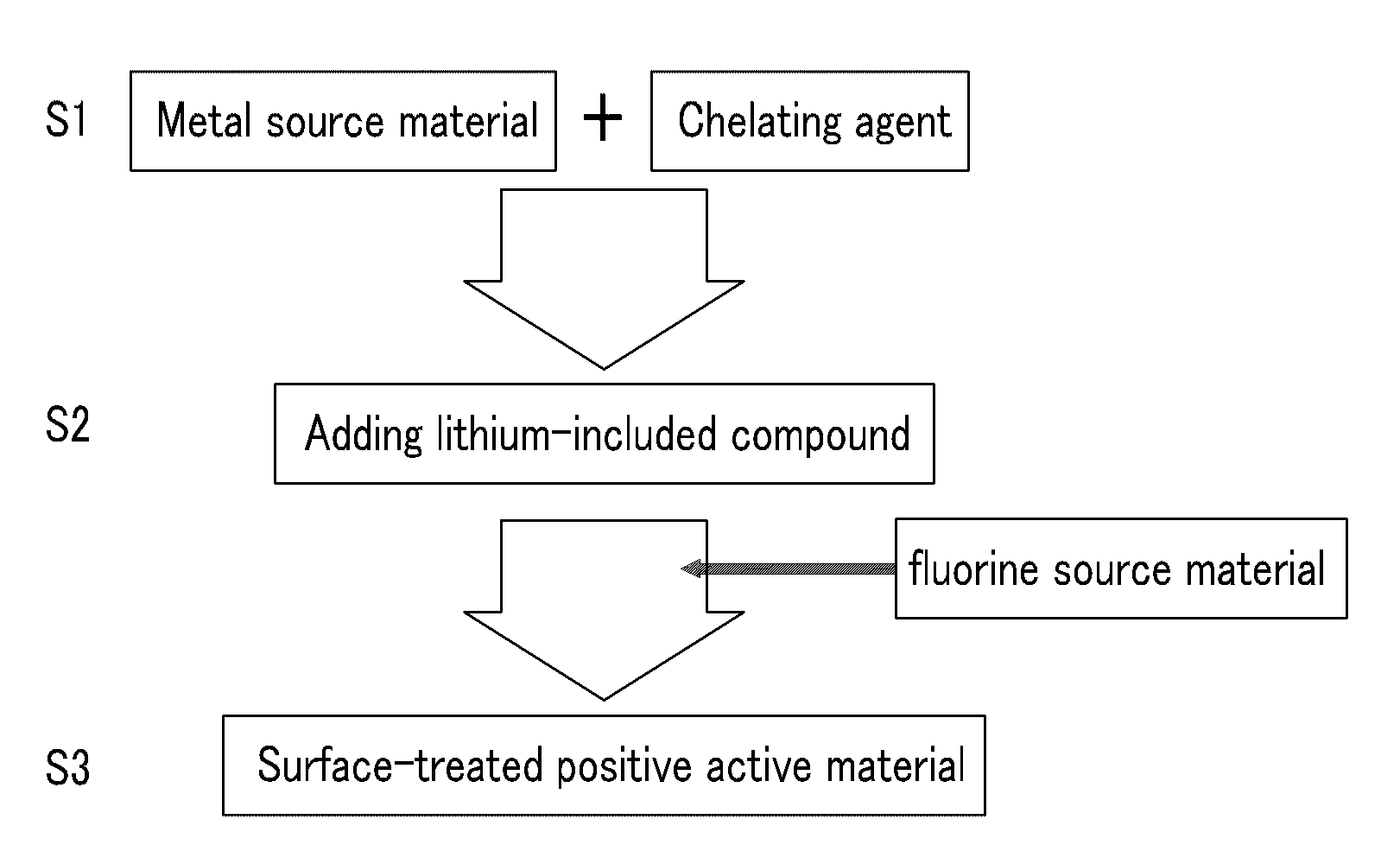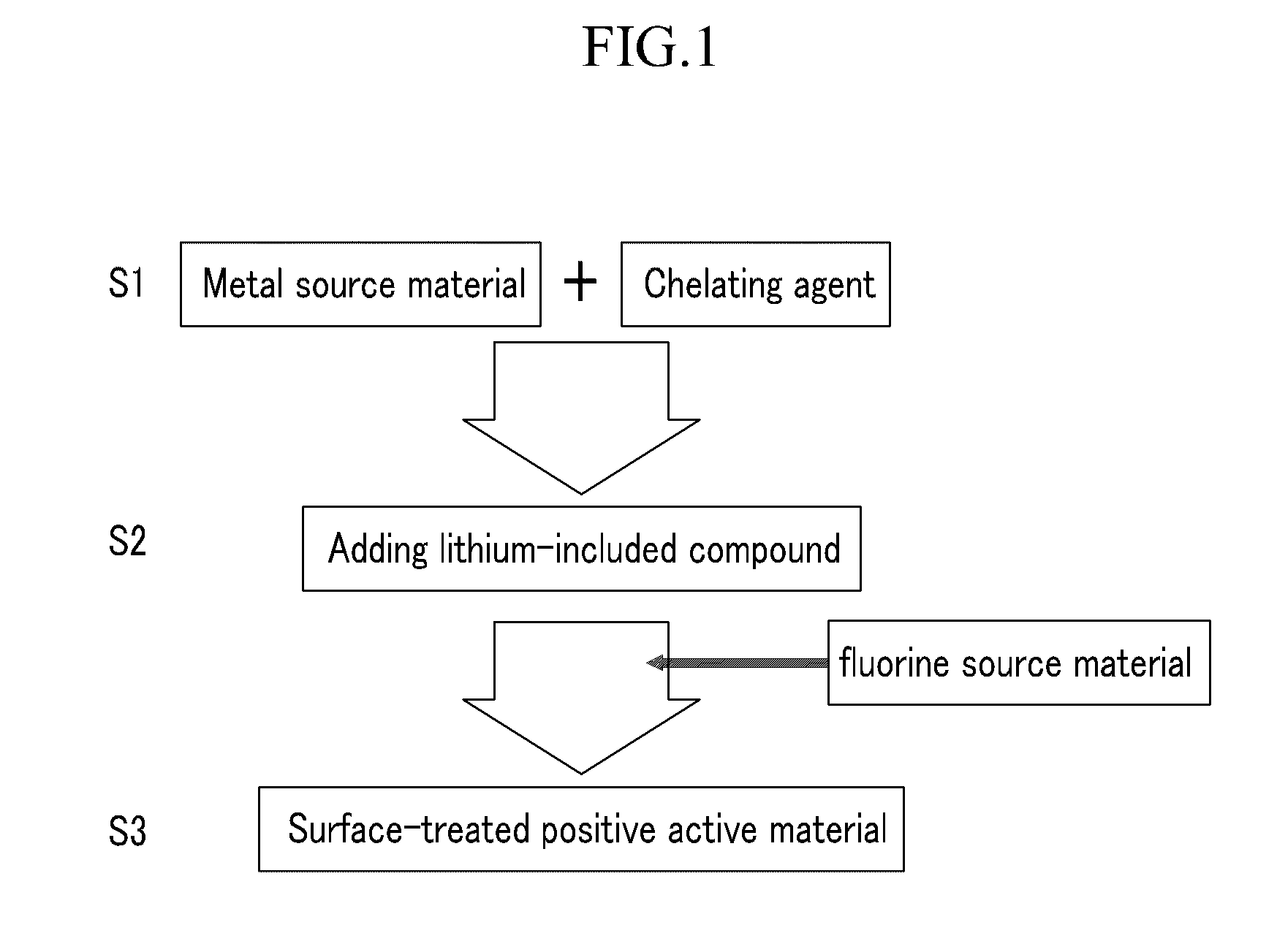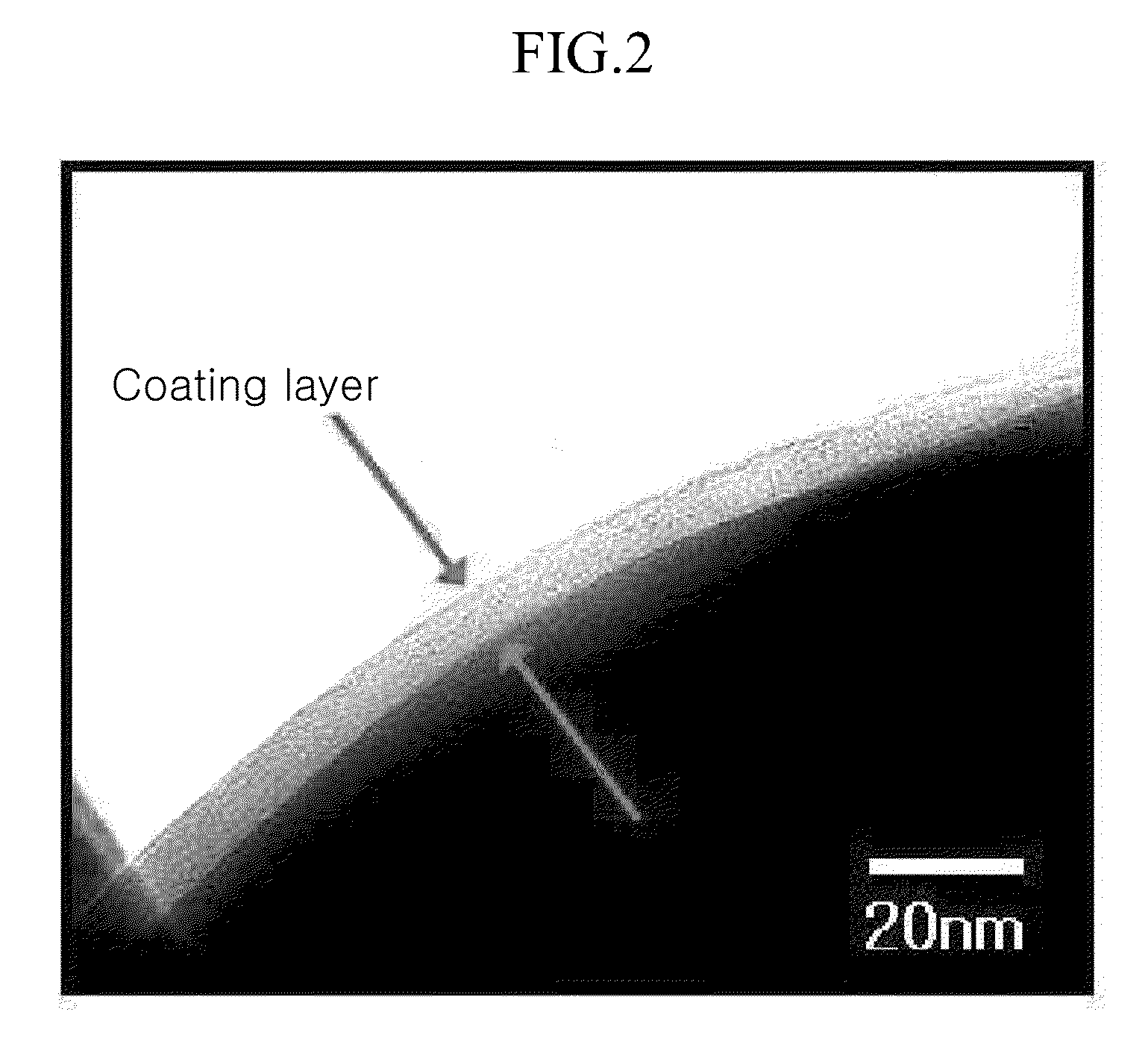Method of preparing positive active material for rechargeable lithium battery, positive active material for rechargeable lithium battery prepared by same, and rechargeable lithium battery including positive active material
positive active material technology, applied in the field of preparing a positive active material for a rechargeable lithium battery, can solve the problems of poor cycle life characteristics, poor high temperature characteristics, and not yet commercially available, and achieve economic preparation, simple process, and improved charge and discharge characteristics.
- Summary
- Abstract
- Description
- Claims
- Application Information
AI Technical Summary
Benefits of technology
Problems solved by technology
Method used
Image
Examples
example 1
Preparation of a Solution Containing a Lithium-Included Compound with a Chelating Agent / Cation-Metal Ion Complex Salt on the Surface
[0106]50 ml of an Al(NO3)3.9H2O aqueous solution was prepared to include Al in an amount of 0.125 mol % based on a lithium-included compound in a 500 ml glass beaker. The aqueous solution was agitated at a speed of 600 rpm, while being maintained at a temperature of 20° C. Next, a lithium-included compound, Li[Ni1 / 3CO1 / 3Mn1 / 3]O2, was slowly impregnated in the aqueous solution, and 1.2 ml of NH4OH was added thereto to regulate its pH to 10.00. Herein, the NH4OH was used in a mole ratio of 7 with respect to 1 of the Al. Then, the resulting mixture was further agitated to form an ammonia-metal ion complex salt, preparing a ammonia-metal ion complex salt and lithium-included compound solution.
Preparation of a Positive Active Material Surface-Treated with a Fluorine Salt-Containing Solution
[0107]50 ml of an NH4F aqueous solution was prepared and added to the...
example 2
[0112]A positive active material coated with Li[Ni1 / 3CO1 / 3Mn1 / 3]O2 and AlF3 on the surface and a cell including the same were fabricated according to the same method as Example 1, except for preparing 50 ml of an Al(NO3)3.9H2O aqueous solution to include Al in an amount of 0.25 mol % against a lithium-included compound in a 500 ml glass beaker.
[0113]The positive active material was photographed of with a transmission electron microscope (TEM). It is provided in FIG. 2. As shown in FIG. 2, Li[Ni1 / 3CO1 / 3Mn1 / 3]O2 is coated with AlF3 on the surface.
example 3
[0114]A positive active material coated with Li[Ni1 / 3CO1 / 3Mn1 / 3]O2 and AlF3 on the surface and a cell including the same were fabricated according to the same method as Example 1, except for preparing 50 ml of an AlN(O3)3.9H2O aqueous solution to include Al in an amount of 0.5 mol % against a lithium-included compound in a 500 ml glass beaker.
PUM
| Property | Measurement | Unit |
|---|---|---|
| mol % | aaaaa | aaaaa |
| mol % | aaaaa | aaaaa |
| temperature | aaaaa | aaaaa |
Abstract
Description
Claims
Application Information
 Login to View More
Login to View More - R&D
- Intellectual Property
- Life Sciences
- Materials
- Tech Scout
- Unparalleled Data Quality
- Higher Quality Content
- 60% Fewer Hallucinations
Browse by: Latest US Patents, China's latest patents, Technical Efficacy Thesaurus, Application Domain, Technology Topic, Popular Technical Reports.
© 2025 PatSnap. All rights reserved.Legal|Privacy policy|Modern Slavery Act Transparency Statement|Sitemap|About US| Contact US: help@patsnap.com



